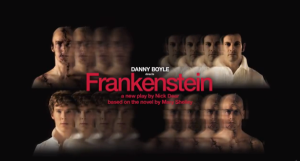Theatre trailers have been around for quite a few years now and with social media being very much a part of our culture it is vital that your marketing team has as much online content they possibly can.
When I first started making theatre trailers I fell into the trap of pointing the camera at a piece of rehearsals or an extract from the play, pressing record and shooting it all from the same angle. While this type of recording is useful for your portfolio or evidence, if you want to get an Arts Council grant, its not going to get paying customers through the door.
Theatre performance doesn’t communicate through film in the same way it does when your sat in the audience watching it live. No matter how good the play or actors are, when you watch it through a recording it can still feel like watching someone’s GCSE drama performance. I find it quite surprising that even now most productions, West End included, advertise shows in this way.
I think the first thing to remember is that, though you’re making a trailer for a theatre production, your using film to create it, so a good start is to watch lots of film trailers. Obviously watching all the big blockbuster trailers with their huge budgets isn’t going to be very helpful, entertaining but not helpful. So it’s best to concentrate on small independent films across all genres and make a list of what you do like and what you don’t. Personally I love a trailer that hooks me enough that I’m not entirely sure what the film is about but I know I want to go and see it. I hate trailers that just serves as a highlight reel of anything funny or surprising that happens in the film, so that by the time you go and see it there’s nothing left to interest you. This is the same reason I no longer read reviews before seeing a show or film, as too many people seem to think that a review consists of telling you every minor plot detail! Sorry I digress.
Once you’ve decided what you like about a trailer the next step is to ask yourself: What is your production about? What’s the story and how do you want to tell it? What will the lighting and music be like?
With all these elements included in your trailer your potential audience will have a much clearer understanding of what your production is about and, hopefully, be excited to come along.
The first theatre trailer I saw which gave a perfect example of this was for Danny Boyle’s Frankenstein teaser trailer.
|
What’s great about this trailer is that in a short space of time it tells you so much. We know both actors will play both lead roles, from the chosen piece of dialogue we know that the line of focus will be on the Creatures search to find a place in his world and that he feels he has a right to do so. Also the look of the picture combined with the unsettling music indicates that the play will be a dark interpretation. The other strength of the trailer is its simplicity. Two actors talking into the camera mixed together with some brilliant sound design. Admittedly they would have had a nice sized budget to create this trailer, with it being the national it was probably a very nice sized budget, but the inspiring thing about this trailer is they haven’t relied on expensive set ups or tricks. It’s still relying on all the skills from people involved in the main production. One more important lesson I learnt from this trailer was: Use close ups. They’re an effective way of adding production value to your trailer and disguising your location, so if you’re clever with the way you shoot you can use one location for the entire video. |
The last bit of advice I’d give for making a trailer would be to approach it in the same way you’re about to approach the production you’re promoting. When putting on a play we rarely have any money but we use those financial restrictions as challenges to come up with creative solutions. We also spend a great deal of time on preparations before rehearsals even start. The same amount of time should be spent on planning your trailer before you start filming.
When we made the trailer for Skin In Flames rehearsals hadn’t yet started, we had no budget and the actors were yet to be cast. As the directors were keen to get the trailer out the same week rehearsals started we carefully planned out an idea that could be shot in one location and wouldn’t rely on seeing the actors faces (we could then add voice overs once rehearsals started) but at the same time would stay true to how the production would eventually look and feel.
I think we managed to produce an engaging theatre trailer that stands out from most but I’ll let you make up your own mind on that one.
Christopher O’Donnell is a theatre director and film maker. He has been an associate artist with StoneCrabs for the past four years and also his own videography company Lucky Number 13.



